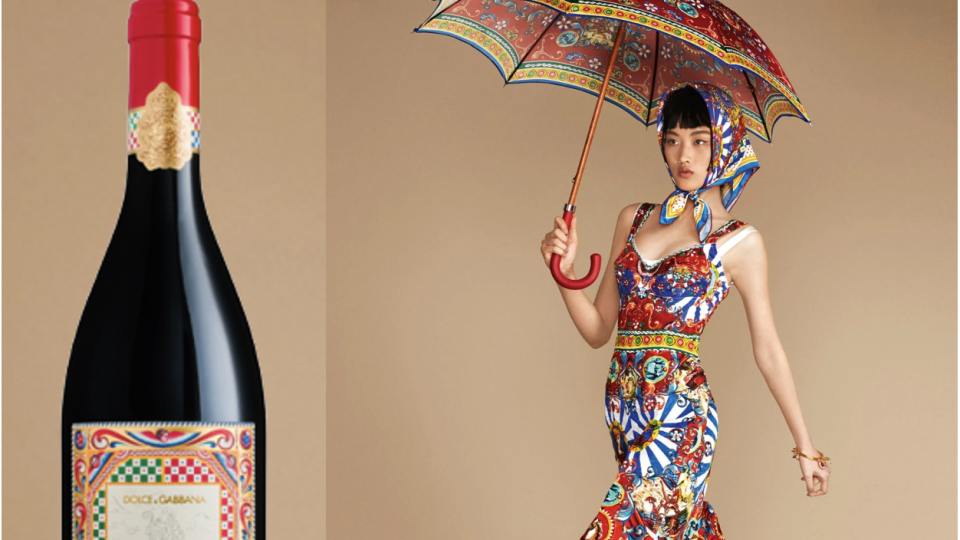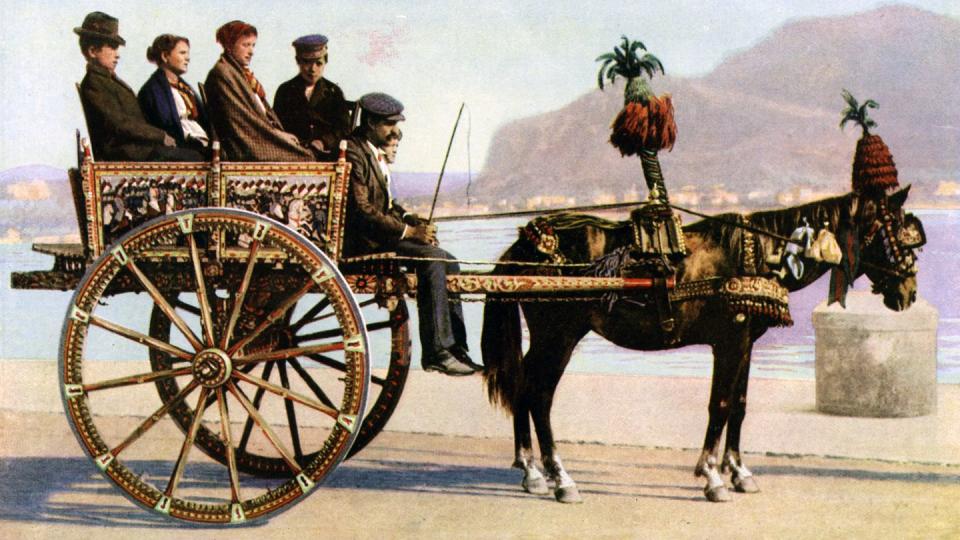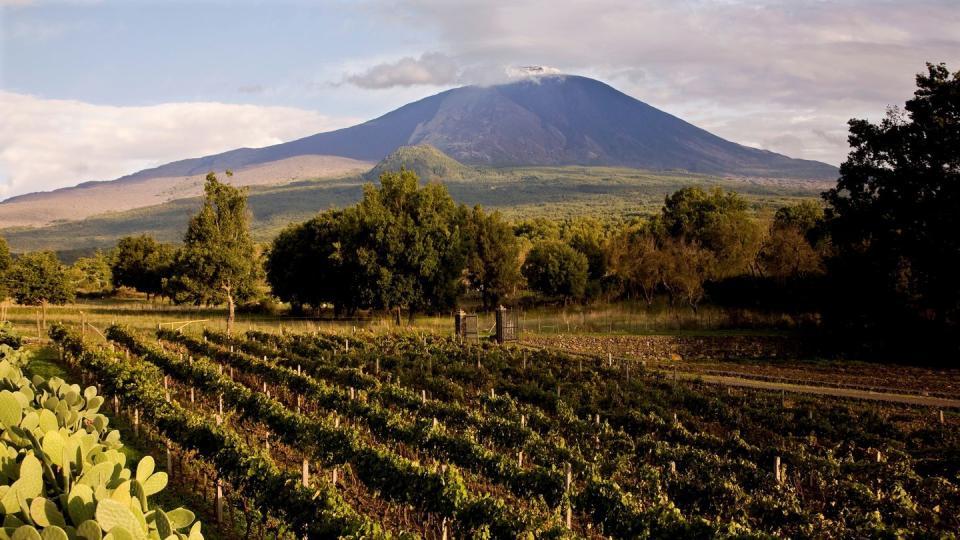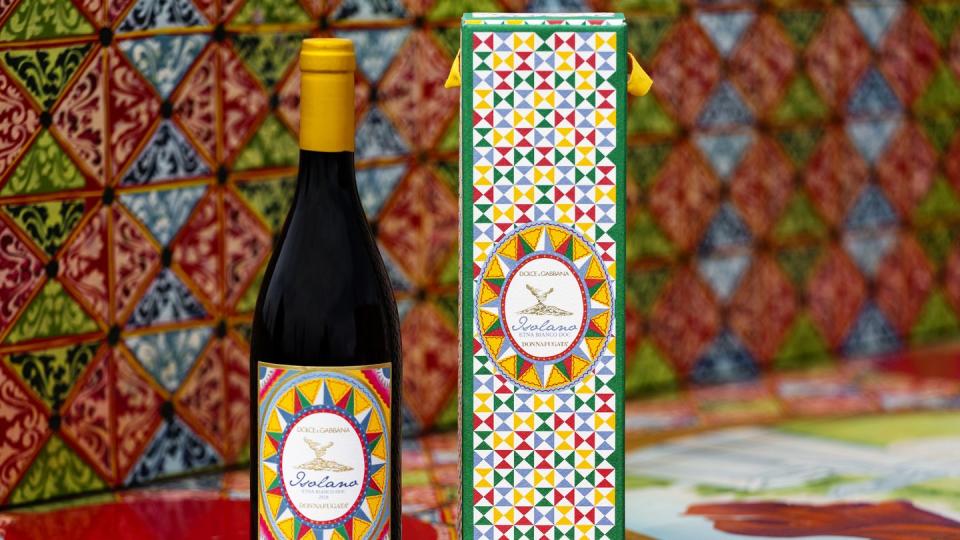“Hearst Magazines and Yahoo may earn commission or revenue on some items through these links.”
Haute couture and fine wine; fashion design and viniculture; a beautiful piece of clothing and a well-crafted bottle of vino. To most people, fashion and wine probably seem to exist in totally separate worlds. However, connoisseurs of both may be aware that an increasing number of fashion designers have recently been getting involved in the wine industry.
Chanel, Christian Lacroix, Karl Lagerfeld, and Dolce & Gabbana are just a few of the big fashion houses that have dipped their toes into the world of wine through partnerships with winemakers. The question is, why are some many fashion designers getting into the wine game?
For starters, there are many similarities between wine and fashion that make them natural companions for collaboration. They are both artisanal products that can range from commodities to luxury collector items. They both take raw materials (such as grapes and fabric) and transform them into new pieces of art. Additionally, bottles of wine and high fashion are released seasonally and draw their unique characteristics from the influences of the preceding year: The climate has a huge effect on winemaking, and seasonal trends and cultural shifts have a profound impact on fashion.
Perhaps the most significant similarity, though, is that both industries tend to market their product to the same consumers.
“There’s some natural synergy in the relationship between fashion and wine, as they are both seen as luxury products,” says Mack Barnes, a wine seller at Golden Age Wine in Birmingham, Alabama. “In terms of their target consumer, they’re going after the same demographic in a sense, and they like to be associated with elevated status.”
Barnes adds that fine wine is usually associated with fine dining, which makes it a luxury product. He adds, “It makes sense to target the type of consumer who likes fine wine and fine dining and can buy high-fashion clothes.”
When viewed through this lens, fashion and wine collaborations make a lot of sense. But that leads to an important question: Are these wines any good?
Fashion designer wine collabs make up an interesting corner of the “celebrity wine” market. Celebrity wines are nothing new, and most consumers—whether they are aficionados or casual drinkers—are probably familiar with at least a few of these big-name brands.
However, there’s an important distinction between these big celebrity wines and most of the fashion wine collaborations out in the market. The former type of collaboration typically involves a celebrity creating their own wine brand (Francis Ford Coppola Winery, Dwayne Wade’s Wade Cellars in Napa Valley) or purchasing a majority stake in an existing estate (Jay Z’s Armand de Brignac Champagne).
Fashion designers, on the other hand, seem to be taking a different approach. For the most part, these collaborations involve designing a custom label for an established producer, with little to no direct input on the winemaking itself. Examples include Karl Lagerfeld’s partnership with Chateau Rauzan-Ségla and Donatella Versace’s drawn wine label for Feudi del Pisciotto.
In fact, this type of collaboration dates back even further than most celebrity wine partnerships. For example, “Chateau Moutin Rothschild in Bordeaux has a long tradition of commissioning artists to design their labels—even Picasso did one,” Barnes explains.
So, while many oenophiles might approach a bottle of wine attached to a fashion house with skepticism, the relatively hands-off nature of these collaborations should lead us away from any immediate suspicion in terms of quality or value.
According to Barnes, these wines should be approached with a healthy mix of caution and open-mindedness: “A dose of skepticism when it comes to something like this makes sense to me, as it is really marketing driven,” Barnes says. “But, I always have a lot more confidence in label design collaborations, because they’re not going to be changing the style of the wine that the producer normally puts out.” In other words, if a designer is collaborating with a quality winemaker, then you can usually expect a quality wine.
Enter Dolce & Gabbana, whose recent partnership with Donnafugata—a large and reputable Italian winery with estates in several appellations across Sicily—is one of the newest high-profile collaborations to hit the market. Domenico Dolce and Stefano Gabbana are both native Sicilians, making Donnafugata a natural place to land for a wine partnership, and their collaboration, which began around 2016, falls under the label design category. The most recent releases in this partnership are two wines—a red and a white—from the Mount Etna sub-region in Sicily.

For the design of the bottle labels, Dolce & Gabbana drew inspiration from Sicilian culture and history, as well as from their previous collections. For example, the label for the Cuordilava Etna Rosso bears a striking resemblance to D&G’s Summer 2016 collection, and the graphics of the label refer to the motifs and stylistic features of a traditional Sicilian cart.

The label for the Isolano Etna Bianco depicts Mount Etna—the towering active volcano that dominates the skyline of the region and whose soils define the appellation’s terroir—surrounded by geometric graphics in traditional Sicilian colors. Both designs are further explored in the luxe custom boxes that come with each bottle.
The wines themselves (the red is made from 100% nerello mascalase grapes, and the white is majority carricante) are satisfactory expressions of the unique terroir of Mount Etna, which according to Barnes is one of the more interesting and exciting wine-growing regions in the world.
“Etna is a unique sub-region with high elevations and volcanic soils that are really healthy for grapes, he says. “The white wines are super crisp, and the reds tend to be lifted and mineral-driven, with a volcanic and savory character.”

Both of the new Donnafugata x Dolce & Gabbana wines exhibit these regional characteristics, and then some. The Isolano Etna Bianco (2020 vintage) demonstrates aromas and flavors of stone fruit, citrus, and a saline minerality, balanced by a medium body and good acidity. The Cuordilava Etna Rosso (2017 vintage) shows dark red fruits like cherries and cranberries on the nose, along with earthy notes of mushroom, leather, and moss, and ash. On the palate, its light body and high acidity are balanced by a touch of oak spice and big, grippy tannins, making it an age-worthy wine that’s also ready to drink now.
Each wine has a price point in the $50 to $100 range, so there are probably some better values to be found elsewhere in the Mount Etna region, as well as some more unique small producers to be discovered. However, these are both classic, high-quality expressions of Mount Etna wines from a solid and very consistent producer. And with their beautiful and one-of-a-kind labels and packaging, it would be hard not to recommend them to anyone with a shared interested in the world of fashion design and great Italian wines.
At the end of the day, if these two wines are emblematic of what’s available in the world of fashion and wine collaborations, then there is definitely quality to be found in this interesting corner of the wine market.
You Might Also Like




